Peter Dornauf – 4 March, 2013
Given the worthy nature of the subject, there's always the worry that the art could easily degenerate into blatant didactic address with designs on the viewer or become simply banal. Fortunately, for the most part, these twin evils are avoided.
Hamilton
Group show
The Care Factor
Curated by Stephanie Chalmers
11 February - 5 April 2013
The Calder and Lawson Gallery, (Academy of Performing Arts) is back in business after a hiatus. Karl Chitham, former curator, has moved on with the position being filled by Hamilton artist, Stephanie Chalmers. Her first outing is a group photography show called The Care Factor; very topical with an ecological theme.
Given the worthy nature of the subject, there’s always the worry that the art could easily degenerate into blatant didactic address with designs on the viewer or become simply banal. Fortunately, for the most part, these twin evils are avoided. Indeed some of these works were so impressive they won me over from my usual antipathy toward the digital process.
The work in question was that of PJ Paterson. Born in Manchester, England, Paterson now lives in Auckland, plying his skills in the cause of environmental concerns.
His The Valley, 2012, a sort of apocalyptic image of thousands of wrecked cars disgorged into some remote, pristine and mist shrouded ravine, gushing down toward the viewer in a cascading morass of rusting metal, is an arresting sight. It’s the simplicity of the idea matched with the conjunction of the real and surreal that astonishes with its daring juxtaposition, digitally mastered.
Using the same trick, Paterson does a similar thing with discarded whiteware; oceans of it with a blue tinge, stretching off into the distance as far as the eye can see. One thinks of the old movie ploy of multiplying a small number of actors to produce the effect of multitudes. It’s all smoke and mirrors. But as in the movies, the effect here is startling in Whitewater, 2012, as it pulls the viewer abruptly in. These images have the sort of power and potential to become iconic posters for something political like the Green Party.
At the other end of the scale, thought equally constructed, is the work of Ross Brown, double recipient of the Brian Brake Memorial Award for photographic excellence. These portraits of a boy and nature (Boy with duckling, 2011 and Fur Boy, 2011), one with painterly renaissance overtones, the other a sort of Lord of the Flies in winter ensemble, reflect the hunter/protector polarities. Cropped, they are confrontational in aspect and slightly unsettling in their distanced staging.
At another pole that plays the nature/culture kick, is Aisha Roberts’ satirical pieces. Domestic Bliss, 2010, is all contrived lipstick smiles and sparkling clean kitchenware with nature tidily confined to a small scene out a window; the beginning of the reign, in the 1950’s, of the synthetic and artificial.
From body politics to the documentation of nature has seen photographer Fiona Pardington move a good distance and yet one could argue that she is still dealing with the politics of the ‘body’ but in a different way with Kereru Wings, Waiheke, 2010. The outstretched feathers of the bird are treated in such a nuanced way that one is reminded of Pardington’s early fascination for the place where religious and sensual obsession overlap.
Wings of another kind are explored by Mark Hamilton. In his coupling of two divergent images - Angel, 2012, and Pukeko, 2005, death in nature is graphically confronted. Angelic wings hover over a gravesite in one, while a dead pukeko dangles rotting off a netting fence, wings collapsed, in the other. Dream and reality clash head-on.
Tree huts apparently are back in fashion - another fifties retro revival. Those were the pre PC days when kids disappeared for days into the bush, by themselves, to play, explore, become part of nature. Mark Purdom celebrates this in two photographs taken in Surrey, England; pictures of den making in the depths of the woods that recall our primitive instincts to construct shelter, lost to an urban world.
An attempt to return to a former ‘romantic’ world is conjured by Darren Glass and his trusty self-made pinhole camera. In an interview with Virginia Were, his attitude to all the new-fangled photographic equipment was made plain. “I have a problem with the snap-happy digital way of working”, he sneered. As if to reinforce the fact, his boxed camera is on display next to the photographs of waterfalls found in the environs of Tongariro National Park. The result is a nostalgic late nineteenth century tondo constructed view of New Zealand landscape.
David Cook’s work, (he’s a Wintec Media Arts tutor) is the most prosaic of the bunch. He plays it straight with five portraits of different people on Arbor Day, holding up plants. Nothing special except for the different way each person is holding their shrub - by the stem, cradled or cupped.
This is a very diverse and eclectic collection of works and is all the better for that. What it demonstrates effectively is how each artist circles around a similar theme, showing the many assorted ways contemporary photographers approach their subject, proving they care.
Peter Dornauf


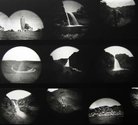

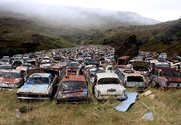
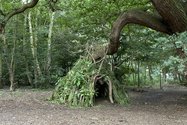
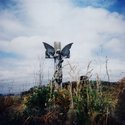
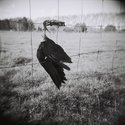
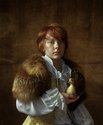






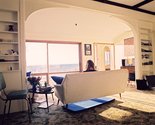
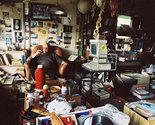
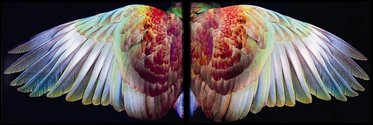
 Advertising in this column
Advertising in this column Two Rooms presents a program of residencies and projects
Two Rooms presents a program of residencies and projects

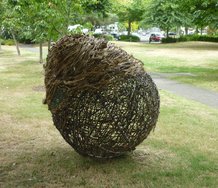
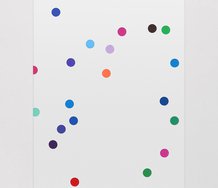
This Discussion has 0 comments.
Comment
Participate
Register to Participate.
Sign in
Sign in to an existing account.